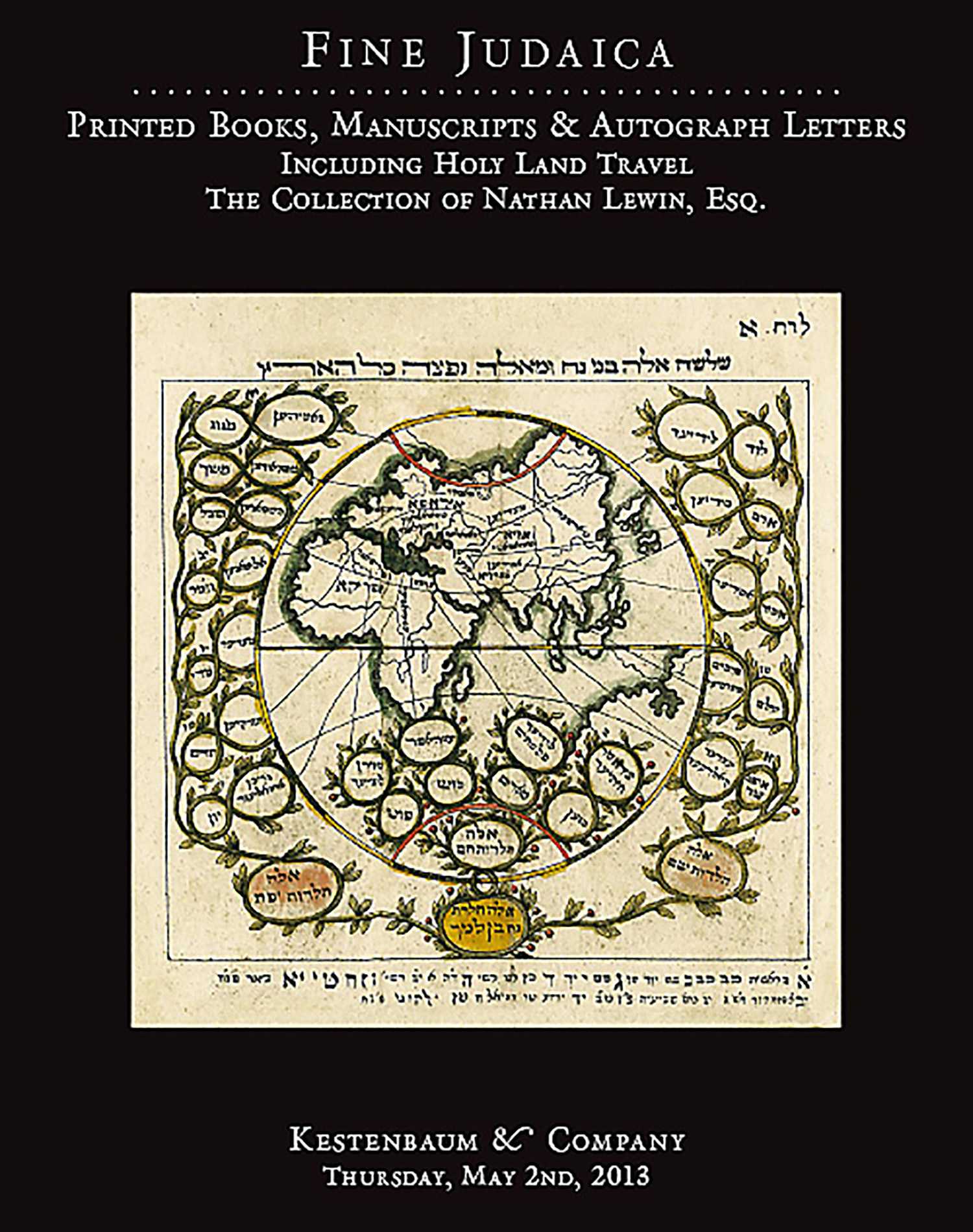(Ed.) Anav, Pinchas Hai. Tosephoth Bikurei Katzir [Responsa concerning the correct cantillation and melody of the Priestly Blessing].

AUCTION 58 |
Thursday, May 02nd,
2013 at 1:00
Fine Judaica: Printed Books, Manuscripts and Autograph Letters
Lot 212
LAMPRONTI, ISAAC.
(Ed.) Anav, Pinchas Hai. Tosephoth Bikurei Katzir [Responsa concerning the correct cantillation and melody of the Priestly Blessing].
Venice: Bragadin 1715
Est: $300 - $500
PRICE REALIZED $325
The First Hebrew Periodical, of which only three issues were published. Upon accepting a teaching position at the Ferrara Talmud Torah, Lampronti initiated a periodical of studies on Halacha and rabbinic literature. Only three issues appeared, with contributions mainly by his own students. This second issue contains responsa from various scholars supporting the prevailing Aschkenazic custom in Italy where the particular melody utilized during the Priestly Blessing resulted in certain verses to be stressed on the last syllable against the view of Nechemia ben Baruch Cohen of Ferrara who stressed the penultimate syllable. This work engendered great controversy and Cohen helped publish the polemical Meitzitz U’Meilitz by Mordehai Tzahalon to support his opinion. Unlike the Aschkenazim in Germany and Poland who sing between the phrases, thus diligent about pronouncing the actual words correctly, the Italians sang the actual words and thus placed the stress of the syllable according to the tune. The Mehlman copy has an extra page of corrections lacking in this and most other copies.
See I. Sonne, Avnei Binyan Lekorot Hayehudim Be’Italia in: Horeb, Vol. VI (1942) pp. 76-114. Also see E. Carlebach, The Pursuit of Heresy: Rabbi Moses Hagiz and the Sabbatian Controversies (1990) p. 158, who calls this controversy “a monument to Rabbinic contentiousness in the 18th century.”
